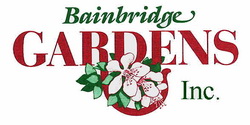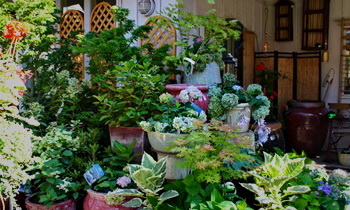Spring hours: Mon-Sat 9:00am-5:30pm, Sun 10:00am-4:00pm
We are running low on some tomato varieties and certain veggie starts. Come in soon!
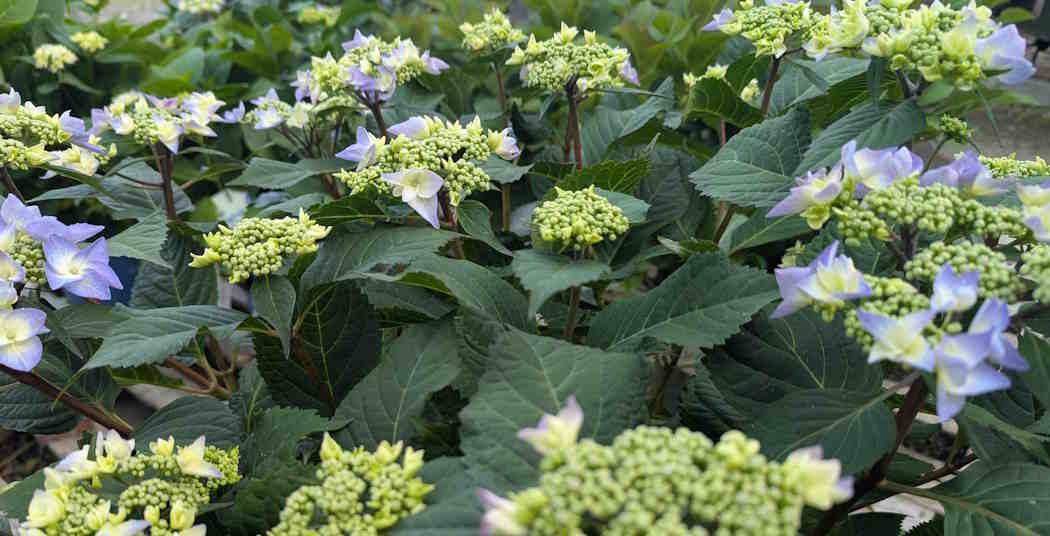
Ends June 30
This Sunday, 1pm: Drip Irrigation with Rafael Sanchez
If you've thought about setting up a drip irrigation system, this is the demo to attend!
Rafael will show you how easy it is to set up your own system.
And on a timer, you can go on vacation knowing that your plants are getting a drink!
Classes and activities are in the Classes link above.
Click on the What's New menu item above to see what is coming through our doors.
Click on the Promotions item above to see what our current sales and promotions are.
There is color everywhere! And also veggies, herbs, fruit trees, rhodies, maples, and summer table top!
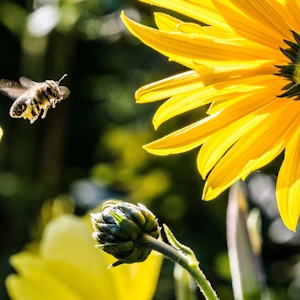
POLLINATOR-FRIENDLY
GARDENING
Did you know that one out of every three foods we eat rely on pollinators? Pollinators fertilize flowers, which then produce seeds, which you can find buried in that apple you eat or on the outside of the strawberry that you pick. In the non-edible world, pollinators help maintain a thriving ecosystem by continuing plant species and adding biodiversity.
As you garden, think about what you are doing in your garden to encourage bees, birds, and butterflies. And also to ensure that we aren't doing to anything detrimental to our flying and buzzing friends.
- Create a pollinator-friendly environment in your backyard. Plant flowers that encourage bees and birds, like asters, coneflowers, lavender, sunflowers, yarrow, etc. Have water dishes in a safe place for pollinators to get a drink.
- Check the labels of any insecticide, herbicide, or fungicide that you use. Be aware of spraying where the bees are and minimizing spray drift.
- Take care of the environment. Climate change not only affects humans.
- Come on in to pick up our list of pollinator friendly plants.
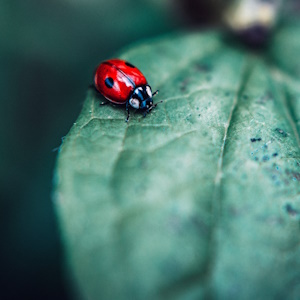
LET GOOD BUGS BEAT
THE BAD BUGS
When you see aphids on your roses, it's easy to forget that many of the bugs in our gardens are good and fight the bad ones on your behalf!
Here is a list of the beneficial bugs we stock at this time of the year. (Please call us for availability as these are live creatures and we don't keep a large stock on hand.)
- Ladybugs -- Most of us are familiar with the ladybug, and while they look docile, they are pretty fierce when it comes to attacking aphids, mites, thrips, mealybugs, and other pests.
- Praying Mantis -- Mantises are territorial and quite efficient at attacking grasshoppers, crickets, caterpillars, beetles, and pretty much anything they encounter, including beneficial insects, so keep that in mind.
- Green lacewings -- Green lacewings attack aphids, scale, white fly, mealy bugs, caterpillars, and more. Note that they are predators only in their larval stages only. Adult lacewings are large green insects with lacey wings.
- Nematodes -- There are a variety of nematodes, but ones we sell target beetle and fly larvae in lawns and gardens. They are also great for eliminating root weevil (larvae) for rhododendrons.
- Predatory mites -- Predatory mites attack the bad mites, like spider mites, rust mites, cyclamen mites, etc. If you have a spider mite infestation on your houseplants, these mites are the ticket.
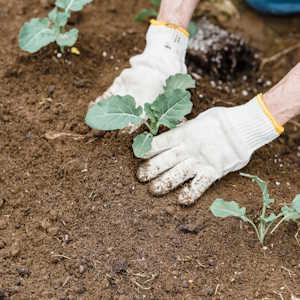
PLANT WHAT
WHEN
We've had a few customers come in alarmed that they can't find the basil starts.
Not to worry, we carry very little basil until it gets warm enough for it to grow successfully outdoors, which means temps are consistently above 50F.
Despite the warm days, the nights are still a little cool, dipping into the 40s, but that will be changing soon. (If you have a greenhouse, then things are different, and you can start seeds right now, anticipating the warmer weather.)
So how you do you decide what to plant and when?
Cool season veggies, like lettuce, kale, chard, carrots, beets, strawberries, etc., should be planted now (well, maybe a few weeks ago, but now is still okay).
Warm season veggies, like tomatoes, eggplant, squash, cucumbers, and basil, should be planted when the ground is warmer, like in late-May to mid-June. The trick with warm season veggies is to ensure that you can get a crop before it starts cooling down again, so it's important to ensure you are getting varieties that can produce in a short time-frame. If you have an area that's not very warm or sunny, you might consider choosing varieties that have smaller fruit, for example. Giant pumpkins simply might not happen in those areas.
What if you've already planted your warm season veggies and it's still cool? Well, you might try covering them with cloth to raise the temperature a bit or buy a cloche to make a "mini-greenhouse". Unfortunately, some veggies like basil are just very sensitive to temperature.
If the only place for your garden is slightly shady (less than half a day of sun), then you might want to avoid the warm season veggies altogether or create a container garden for your patio where you might get more sun and warmth. Tomatoes, eggplant, cucumbers, and basil grow well in a container.
The good news is that plants want to grow. We just need a little know-how and Mother Nature to help them be successful.
SAFETY POLICIES AT BAINBRIDGE GARDENS
Face masks are optional throughout the nursery. We ask that if you are feeling ill and cannot wear a mask, please stay home and call us to arrange a contact-free delivery or curbside pickup. We continue to accept orders over the phone or by emailing us, but please note that these orders take 24-48 hours to fulfill.

